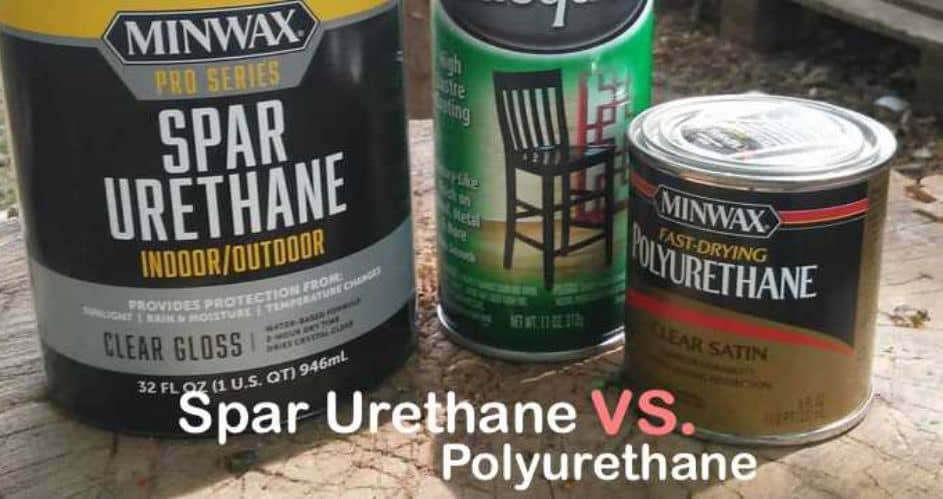
When it comes to finishing wood surfaces, there are various options available. Spar urethane and polyurethane are two popular options. But which is superior? Making a wise choice for your subsequent woodworking project can be facilitated by being aware of the fundamental distinctions between the two.
Any woodworking job should include wood finishing since it improves the appearance and offers protection from UV rays, moisture, and wear and tear. Both finishes are well-liked options for creating a long-lasting and beautiful finish, but they have unique qualities that set them different.
It’s essential to pick the correct finish for your project because it can impact its aesthetic appeal and durability. This article compares spar urethane vs polyurethane, outlining its advantages and disadvantages so you may choose the material that best suits your needs and tastes.
Understanding Spar Urethane and Polyurethane
Spar urethane and polyurethane are protective finishes used primarily on wood surfaces. They give the wood a layer of defence against moisture, UV radiation, and everyday wear and tear. The two finishes, however, differ substantially in terms of application techniques, composition, robustness, and appearance.
Differences in Composition
Spar urethane is specifically formulated for exterior use, making it ideal for surfaces exposed to sunlight, moisture, and temperature changes. It contains added oils and resins that enhance its ability to withstand outdoor elements.
On the other hand, the adaptable finish polyurethane is frequently utilized for interior and exterior applications. It comes in various formulas, including water- and oil-based versions.
Application Methods
Both spar urethane and polyurethane can be applied using brush, spray, or wipe-on techniques. Brush application is the most common method, allowing for precise control over the amount of finish applied.
The spray application provides a more even and professional-looking finish but requires proper ventilation and protective gear. Wipe-on application is suitable for smaller projects and offers ease of use.
Durability and Protection
Spar urethane provides excellent protection against moisture, sunlight, and temperature fluctuations. It creates a flexible, durable coating that can endure abrasive outside elements.
Polyurethane, on the flip hand, offers excellent durability and defence for inside and outside usage. It provides a rigid, abrasion-resistant surface that shields from scrapes and stains.
Appearance and Finish
When it comes to the appearance of the finish, spar urethane and polyurethane have distinct characteristics. Spar urethane enhances the natural beauty of wood, providing a warm, amber hue.
In outdoor settings, it gives the surface more depth and richness. On the other hand, polyurethane offers a transparent, clear surface that protects the wood’s inherent colour. It comes in a range of sheen finishes, including satin, glossy, and matte.
Resistance to Environmental Factors
The resistance of a finish to external influences is one of the most important aspects to consider. Spar urethane is the perfect material for exterior uses, including decks, outdoor furniture, and doors, because it offers high resistance to moisture, U.V. radiation, and temperature variations.
Polyurethane also provides good resistance to these elements, but specific formulations may be more suitable for indoor use.
Maintenance and Recoating
Both spar urethane and polyurethane finishes require maintenance and occasional recoating to ensure their longevity. Over time, these finishes can wear off due to exposure to sunlight and regular use.
When maintenance is necessary, sanding and cleaning the surface before recoating is recommended to achieve the best results. Additionally, following the manufacturer’s guidelines regarding recoating intervals is essential to maintain the protective qualities of the finish.
Cost Considerations
Depending on the project’s manufacturer, formulation, and scale, the price of spar urethane and polyurethane can change. Due to its specialised formulation for exterior usage, spar urethane typically costs more than polyurethane.
It is a good investment for outdoor applications due to its durability and protection. Because it is a versatile finish, polyurethane offers an affordable choice for interior and exterior work.
Choosing the Right Finish
When deciding between spar urethane and polyurethane, consider the following factors:
Application
Determine whether your project is for indoor or outdoor use.
Environmental Exposure
Assess the level of exposure to moisture, sunlight, and temperature fluctuations.
Consider whet
Appearance Preferenceher you prefer a warm amber hue or a clear, natural finish.
Durability
Evaluate the expected level of wear and tear your project will undergo.
Budget
Consider the cost implications based on your specific project requirements.
Conclusion
In summary, spar urethane and polyurethane are reliable finishes that provide protection and enhance the beauty of wood surfaces. Spar urethane excels in outdoor applications, offering superior resistance to environmental factors.
Polyurethane is a versatile material that can be utilised for both indoor and outdoor projects because of its many formulation options.
Analyse the requirements of your project, considering durability, access to the environment, appearance, and budget, into account, among other factors, to make an informed decision when choosing the right finish.
FAQs
Can I use spar urethane indoors?
While spar urethane can be used indoors, it is specifically formulated for exterior applications. It is recommended to use polyurethane or other suitable finishes for interior projects.
Does spar urethane require more maintenance than polyurethane?
Due to exposure to outdoor elements, Spar urethane may require more frequent maintenance and recoating than polyurethane used indoors. Regular inspection and maintenance are crucial to ensure the longevity of the finish.
Is spar urethane more expensive than polyurethane?
Generally, spar urethane tends to be more expensive than polyurethane. However, the added cost is justified by its superior durability and resistance to outdoor conditions.
Can I apply polyurethane over spar urethane?
It is not recommended to apply polyurethane over spar urethane directly. Proper surface preparation, including sanding and cleaning, ensures adequate adhesion between the finishes.
How long does spar urethane last on outdoor surfaces?
The lifespan of spar urethane on outdoor surfaces depends on various factors such as exposure to sunlight, moisture levels, and application quality. With proper maintenance and recoating, spar urethane can last several years before requiring additional treatment.
